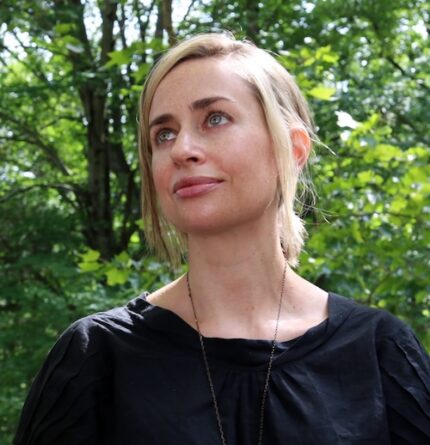Performances
Rashad adds star power to Gateways Festival’s Chicago debut
On Monday night, a healthy crowd packed into Pick-Staiger Concert Hall […]
Kraemer provides season highlight with a Baroque carnival of the animals
Music of the Baroque’s penultimate program of the year, titled “Birds, […]
Haydn provides the highlight in IPO’s classical-era program
After a very American season to date, the Illinois Philharmonic Orchestra […]
Articles
Klaus Mäkelä to become CSO music director—in 2027
The expected news was finally made official Tuesday morning: Klaus Mäkelä […]
Concert review
EcoVoice Project, Loyola forces make musical plea for climate awareness

For centuries, musicians and theologians have viewed the wonder of the natural world through a liturgical lens. Calls for environmental sustainability in the wake of climate change may seem acutely modern, but the moral responsibility to protect Creation—and the threat of destruction if this responsibility is abdicated—is a charge of Old Testament proportions.
Such was the thrust of an Earth Day-themed program, titled “Mass Reimagined,” presented at Loyola University’s Madonna della Strada Chapel on Sunday. The concert featured students from the Loyola Ignatian Voices, University Chorale and University Singers chorus alongside the EcoVoice Project’s professional New Earth Ensemble, which comprises a vocal septet alongside a thirteen-piece instrumental fleet of woodwinds, a string quartet, harp, piano, and percussion.
Devised and led by conductor Kirsten Hedegaard, co-founder and artistic director of the EcoVoice Project, the program consisted of two works that leveraged the traditional Catholic mass form to comment on global extinction at the hands of humanity. Both pieces were harmonically and contextually modern but assumed differing rhetorical and aesthetic stances to deliver their urgent warning.
The first was the world premiere of Dongryul Lee’s “Kyrie Eleison,” excerpted from the Loyola faculty member’s forthcoming Missa Laudato Si’. That work draws upon Pope Francis’ encyclical letter from 2015, which urges a redoubled commitment to diligent stewardship of the earth, and is penned “not in overly poetic and spiritual ways,” but in a “cold, practical, rational, and scientific manner,” according to Lee’s program notes.
This first movement of Lee’s mass takes a similarly exacting approach. From the jump, the work pulls no punches, opening with peals of percussion followed by a seething torrent of piano, harp, and strings. By the time the chorus emerges from the texture with a Gregorian-style chant, the mood is positively apocalyptic. Quotations of the Dies Irae mingle with Buddhist chant to dispel any notion of a silver lining.
On a screen, projected names of endangered species were cycled throughout the performance. In the work’s most striking moment, the sheer volume of names on this list was made audible: as the chorus halted, a throng of students—discreetly dispersed throughout the audience wearing street clothes (and constituting roughly a third of those in attendance)—leapt to their feet, and declaimed simultaneously the names of creatures on that list.
At times the volume and plurality of the music, coupled with the chapel’s particularly bright, reverberant acoustic, rendered the sonic textures impenetrable. Midway through the movement, a student stepped into the aisle to offer a reading amidst the din, but even speaking into a microphone, was all but overwhelmed by the typhoon of voices. One hopes a different choice of venue for the complete work’s premiere, scheduled for this October, will offer a sonic corrective.
The program was performed without pause, and the audience was asked to hold applause until the end. As an interlude between works, students from Loyola’s School of Environmental Sustainability recited excerpts from the original Laudato Si’ letter, followed by a responsorial prayer “in the name of our beautiful earth,” led by Hedegaard.

In the program’s latter half, Sarah Kirkland Snider’s Mass for the Endangered took a more solemn, contemplative approach than did Lee’s work. Premiered in 2018, it is Snider’s most ambitious choral opus to date, and one that offers a compelling and emotionally resonant interpretation of its subject matter. The text, created by author and poet Nathaniel Bellows, adapts the mass form by weaving the traditional Latin with original verse in English into a requiem for a dying planet.
The piece opens in a deferential tone with a low drone embellished by a faraway-sounding piano motif that shines mutely like a shard of tumbled sea glass. From the opening bars, it’s evident Snider’s Mass sits comfortably in the continuum of great authors of the form. But notably, this Kyrie pleads for mercy not on mankind but upon “earth, air, and water … on stone, tree, and flower.” Projected visuals by Deborah Johnson, in which the threatened fauna were depicted in celestial forms and tessellating color, further underscored the piece’s cosmic scope.
The harmonic environment of the mass is largely modal, placing it comfortably within the vocal faculties of an accomplished student ensemble. The combined forces of the Ignatian Voices and New Earth Ensemble singers performed admirably, though not without some tonal grit and less-than-perfect intonation.
Hedegaard achieved better transparency in the overall balance than in the opening work. At times, such as in the breathless harmony of the Alleluia, tempos would have benefited from greater urgency.
Still, the conductor traced an effective narrative arc through the work. The Sanctus, which strikes a more hopeful tone than the preceding movements, landed with sufficient emotional portent. The singers were at their best here melding richly with the reverberant strains from the New Earth instrumentalists.
The Agnus Dei arrives like a coda to this resounding zenith, recapitulating the mysterious drone and tumbling piano motif from the Kyrie. As the final notes faded, a hushed silence, followed by an even more prolonged standing ovation, indicated that the music had found its mark.
The EcoVoice Project returns in October to perform the midwest premiere of Reena Esmail’s Malhaar: A Requiem for Water. ecovoiceproject.org
Posted in Performances
No Comments
Calendar
April 24
CelloBello
Pacifica Quartet
Balourdet Quartet
Brant Taylor, Ken […]
News
Sir Andrew Davis 1944-2024
Sir Andrew Davis, longtime music director of the Lyric Opera of […]





